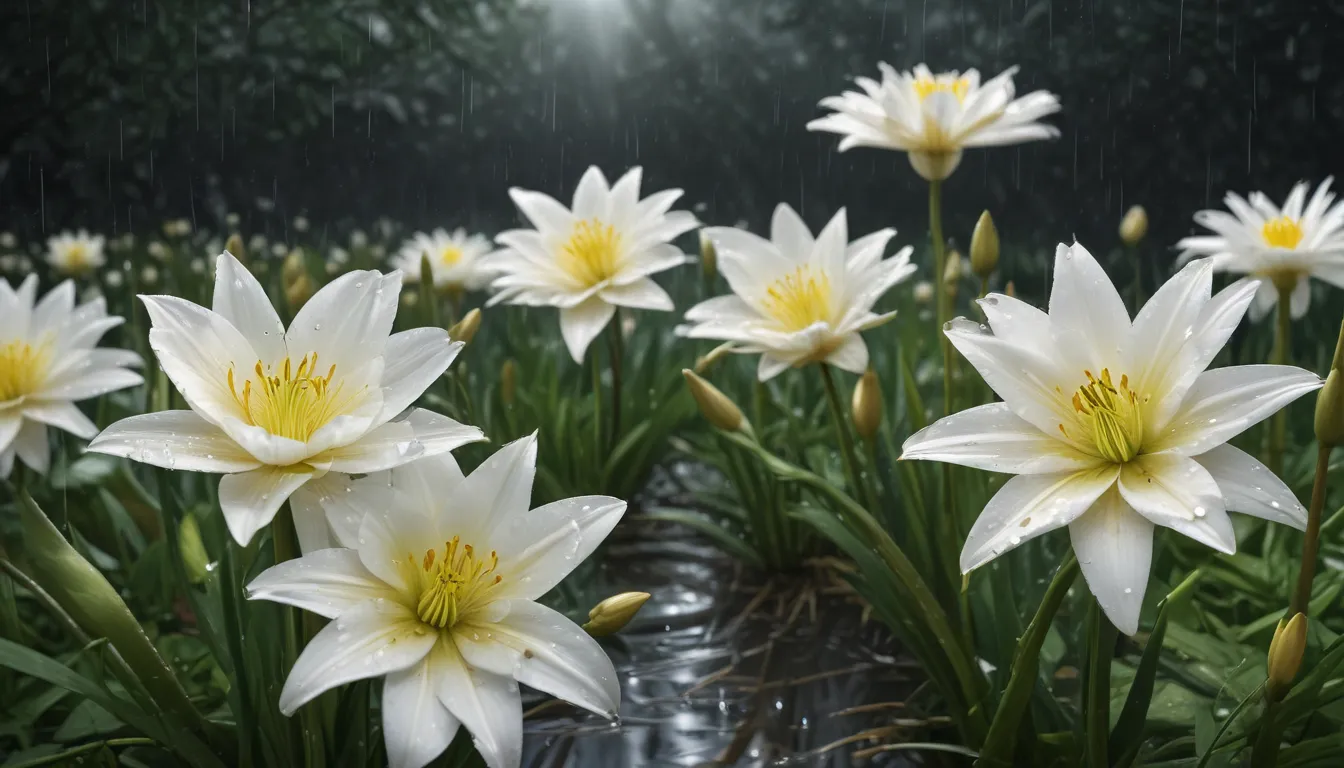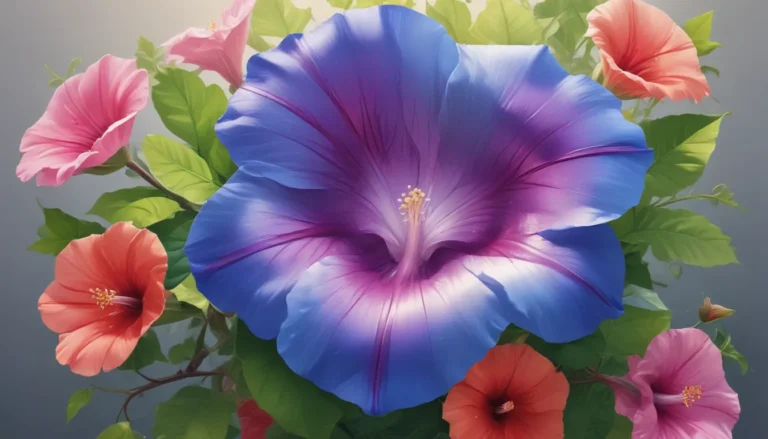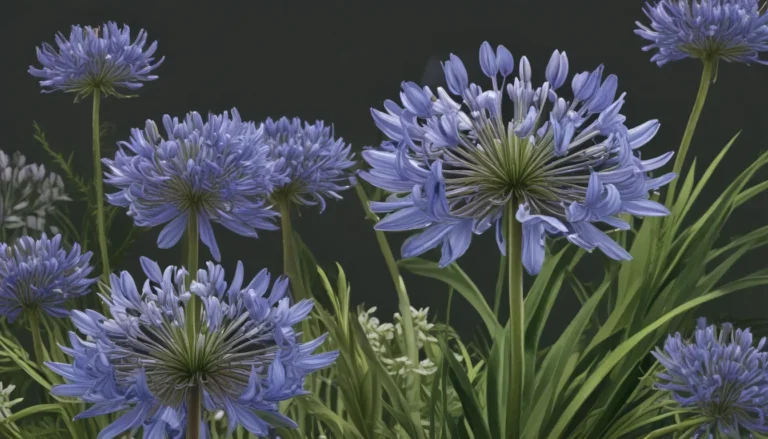The pictures we use in our articles might not show exactly what the words say. We choose these pictures to make you interested in reading more. The pictures work together with the words but don’t take their place. The words still tell you the important facts.
Rain lilies, with their delicate and captivating blooms, are a delightful addition to any garden or landscape. These petite flowers have intrigued botanists and flower enthusiasts alike with their unique characteristics and intriguing life cycle. From their ability to thrive in diverse climates to their resilience in challenging conditions, rain lilies are truly remarkable. In this article, we will unveil 12 intriguing facts about rain lilies that showcase their beauty, resilience, and adaptability. Whether you have a green thumb, love nature, or are simply curious about the wonders of the plant kingdom, these facts will spark your interest and deepen your appreciation for these enchanting flowers.
The Allure of Rain Lilies: Key Takeaways
- Rain lilies are diverse, quick-blooming flowers that symbolize hope and resilience. They come in vibrant colors, attract hummingbirds, and even possess medicinal properties, making them a fascinating addition to any garden.
- These low-maintenance plants are beloved by gardeners and wildlife alike. With their adaptability and enchanting beauty, rain lilies continue to captivate and bring joy, serving as a reminder of nature’s resilience and beauty.
Diverse Species: A World of Rain Lilies
Rain lilies belong to the Amaryllis family, boasting approximately 70 different species scattered across the globe. Each species possesses its own unique characteristics and charm, adding to the allure of these enchanting flowers.
A Symbol of Hope: Blooming After the Storm
Rain lilies have long been associated with hope and new beginnings. Their ability to bloom shortly after heavy rainfall has made them a symbol of rejuvenation and optimism, bringing a sense of renewal to any garden they adorn.
Preferred Habitat: Thriving in Various Climates
Rain lilies thrive in regions with tropical and subtropical climates, making them adaptable to a variety of habitats including meadows, forests, and even deserts. Their ability to thrive in diverse environments showcases their resilience and versatility.
Quick Bloomers: Nature’s Rapid Transformation
One of the most intriguing features of rain lilies is their rapid blooming. These flowers can transition from bud to full bloom in just a few hours, adding a touch of magic and wonder to any garden they grace.
Varied Colors: Nature’s Kaleidoscope
Rain lilies come in a dazzling array of colors, including white, yellow, pink, and lavender. Their vibrant hues add a burst of color to gardens and make them a favorite among floral enthusiasts seeking to add a pop of color to their outdoor spaces.
Nocturnal Blooming: Enchanting Evening Displays
Some species of rain lilies bloom exclusively at night, filling the air with a sweet and enchanting fragrance. Their nocturnal blooms add an element of mystery and allure to the garden, attracting not only human admirers but also nocturnal pollinators.
Low-Maintenance Plants: Nature’s Easy Beauties
Rain lilies are relatively easy to care for, making them a popular choice for gardeners looking to add beauty with minimal effort. They require well-drained soil, regular watering, and some sunlight to thrive, making them a low-maintenance yet rewarding addition to any garden.
Bulbous Perennials: Enduring Beauties
As bulbous perennials, rain lilies produce underground bulbs that store energy for future growth. This adaptation allows the plants to survive harsh conditions and bloom year after year, showcasing their resilience and endurance.
A Favorite of Hummingbirds: Nature’s Pollinators
The nectar-rich flowers of rain lilies are a magnet for hummingbirds, playing a crucial role in pollinating the blossoms and aiding in the continuation of the species. The delicate dance between rain lilies and hummingbirds is a sight to behold in any garden.
Medicinal Properties: Nature’s Healing Touch
In traditional medicine, rain lilies have been used for their medicinal properties. They have been employed to treat various ailments, including skin irritations and respiratory issues, highlighting their value beyond their aesthetic appeal.
Adaptability: Thriving in Any Environment
Rain lilies have shown remarkable adaptability and can thrive in both wet and dry conditions. Their ability to survive in diverse environments has contributed to their widespread distribution, showcasing their resilience and versatility as a plant species.
Beloved by Gardeners: Nature’s Treasures
Gardeners around the world hold rain lilies dear to their hearts. These resilient flowers bring beauty and joy to gardens, serving as a reminder of nature's resilience and bringing a sense of tranquility and charm to any outdoor space.
Conclusion: Embracing the Beauty of Rain Lilies
In conclusion, rain lilies are captivating flowers with their diverse species, rapid blooming, and vibrant colors. These low-maintenance plants possess various medicinal properties and are cherished by both gardeners and the wildlife they attract. Whether adorning a garden bed or brightening up a windowsill, rain lilies continue to captivate with their beauty and symbolize the hope and resilience of nature.
FAQs About Rain Lilies
Q: What is a rain lily?
A: Rain lilies are small flowering plants belonging to the genus Zephyranthes and Habranthus known for their rapid blooming after rainfall.
Q: Where are rain lilies found?
A: Rain lilies are native to regions of North and South America, including parts of the United States, Mexico, and Argentina.
Q: What do rain lilies look like?
A: Rain lilies typically have long slender leaves and produce small, trumpet-shaped flowers in various colors like white, pink, and yellow.
Q: Can rain lilies be grown in gardens?
A: Yes, rain lilies can be grown in gardens as they are adaptable and relatively easy to cultivate, requiring well-draining soil and partial shade.
Q: Are rain lilies toxic to pets?
A: Rain lilies are generally considered non-toxic to pets, but caution is always advised to prevent potential ingestion or allergic reactions.
Q: Do rain lilies have cultural significance?
A: Yes, rain lilies hold cultural significance in various traditions, symbolizing renewal, purity, and good luck, often used in religious ceremonies and rituals.
Explore the fascinating world of rain lilies and uncover the magic and beauty they bring to gardens and landscapes. With their enchanting blooms and unique characteristics, rain lilies continue to captivate and inspire nature enthusiasts worldwide. Remember to pause and appreciate the wonder of rain lilies next time you encounter these captivating flowers in nature.






